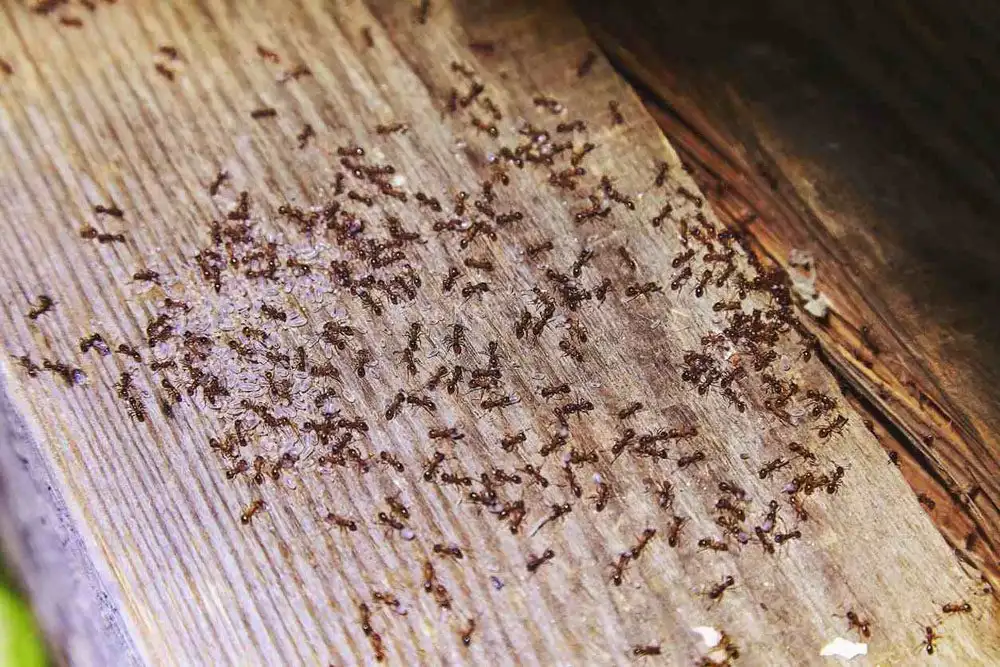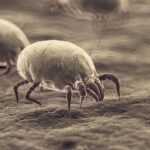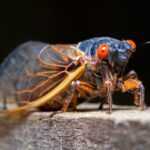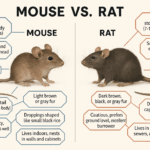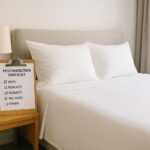What are Carpenter Ants?
Carpenter ants are a type of large, black ant known for their ability to damage wood and other materials. These ants are one of the most common pests found in homes and buildings, and if left unchecked, they can cause significant structural damage. Unlike termites, carpenter ants do not eat wood; instead, they excavate it to create their nests, leading to extensive carpenter ant damage over time. Carpenter ant colonies, particularly in moist climates, can cause significant structural damage to homes, making early detection crucial.
Physical Characteristics of Carpenter Ants
Carpenter ants are typically between 1/4 and 1/2 inch in length and are black or dark brown in color. They have a distinctive narrow waist and a rounded thorax, which sets them apart from other ant species. Often mistaken for termites, carpenter ants are much larger and have a more elongated body shape. Recognizing these physical characteristics can help you identify a carpenter ant infestation early.
Carpenter Ant Behavior
Carpenter ants are social insects that live in colonies and are most active at night, making them nocturnal creatures. They are attracted to sweet substances such as honeydew from aphids, sap, pollen, nectar, and fruits. Additionally, they feed on insects, both dead and alive. While carpenter ants do not eat wood, they excavate it to create smooth tunnels and galleries for their nests. This behavior can lead to significant carpenter ant damage if not addressed promptly.
Signs You May Have a Carpenter Ant Infestation
Because of their habit of nesting in houses, carpenter ants are a concern to homeowners and like termites, carpenter ant infestations can be especially dangerous for a homeowner. Sightings of large wingless worker ants and the emergence of winged swarmers are signs that indicate an established carpenter ant colony. One nest can cause extensive damage before you even realize you have a problem. Recognizing the signs of carpenter ants early and receiving a proper carpenter ant treatment can help minimize the damage and keep recovery costs to a minimum.
Spotting Medium to Large Ants
Live carpenter ants are often the first sign of infestation. During spring, you may spot winged ants looking for mates, which can indicate an active carpenter ant nest nearby. They’re typically larger than other ants, but carpenter ants can be small. They range in size from 1/4 to 3/4 of an inch long. They’ll travel quite a ways from their original nest in search of food. They never fly too far from their nest, so pay attention to where you spot them.
Carpenter Ant Damage and Frass
Contrary to popular belief, carpenter ants don’t eat wood, they nest in wood. When a major infestation sets in, you may start seeing little piles of sawdust or wood shavings coming from wood items and structures. This sawdust, also known as wood shavings, is called “frass” and is a good indicator you are dealing with carpenter ants and not termites. Frass is created when carpenter ants use their mandibles to excavate tunnels in wood to nest in. The most common places to spot frass are near windows, skylights, doors, and baseboards of walls and in the corners of rooms.
Ant Trails
Worker ants follow foraging trails along corners, wires, pipes, and logs to food sources beloved by all ants. You may spot them following set trails in your kitchen to unsealed sweets, pet food containers, and spills of sweet syrups like honey and jam.
Rustling Noises
Colonies moving inside their nests produce a distinct sound as carpenter ants burrow into wood to create their nests. Some people describe it as a vague “rustling” while others think it sounds like crinkling cellophane. It may come from walls voids, ceilings or other hollows within your home. Tap sharply on any area you think may have a carpenter ant infestation and listen for the sound with your ear to the wall.
Carpenter Ant Nests
Carpenter ant infestations begin with one carpenter ant nest but can quickly spread. Identifying an active carpenter ant nest is crucial for effective removal. During the carpenter ant removal process, it may be necessary to hunt for satellite nests both inside and outside. Look for nests in hollow areas, like inside walls and doors.
The ants are partial to water damaged and decaying wood. Windowsills and the areas beneath them are good candidates, as are neglected exterior wood piles and buildings like sheds. Ivy-covered chimneys are another common nesting ground.
Professional carpenter ant elimination utilizes identifying nest location and specialized treatments using baits and specialized residual materials to take care of your unwelcome house guests. Schedule an inspection at the first hints of infestation to protect your home and family.
Where Do Carpenter Ants Nest?
Carpenter ants are quite particular about where they set up their homes. They typically nest in moist or decaying wood, which provides the perfect environment for their colonies to thrive. These nests can be found both indoors and outdoors, often in areas with a constant water source, such as near a leaky pipe or a damp basement. This is where you’ll find the main nests, also known as parent colonies, which house the queen, eggs, and young ants.
But carpenter ants don’t stop there. They also establish satellite nests, which are smaller and located some distance away from the main nest. These nests are used to house mature ants and pupae ready to form new colonies. Satellite nests can be found in drier wood, such as doors, sound wood, and even foam insulation. This ability to create multiple nests can be a sign of a larger carpenter ant infestation.
Common locations for these nests include:
- Tree stumps or dead trees
- Firewood or wood piles
- Insulation or wall voids
- Behind wallpaper or paneling
- Under flooring or beneath floorboards
Identifying and treating all nests, including satellite nests, is crucial for effectively eliminating a carpenter ant infestation. Ignoring these nests can lead to a persistent problem that continues to damage your home.
Main Nests and Satellite Nests
Carpenter ants are strategic in their nesting habits, often creating a network of nests to support their colonies. The main nests, or parent colonies, are typically found in areas with a constant water source. These nests are the heart of the colony, housing the queen, eggs, and young ants. You might find these nests in damp basements, near leaky pipes, or in other areas with high moisture levels.
Satellite nests, on the other hand, are smaller and located some distance away from the main nest. These nests are used to house mature ants and pupae ready to form new colonies. Unlike the main nests, satellite nests are often found in drier wood, such as doors, sound wood, and even foam insulation. This division of labor allows carpenter ants to expand their territory and increase their chances of survival.
To effectively eliminate a carpenter ant infestation, it’s essential to identify and treat all nests, including satellite nests. This comprehensive approach ensures that the entire colony is eradicated, preventing future infestations.
When Do Carpenter Ants Appear?
Carpenter ants are most active during the warmer months, making spring and summer the prime time for spotting these pests. As temperatures rise and humidity increases, carpenter ants emerge from their nests to forage for food and establish new colonies. This is also when you’ll likely see flying ants, or swarmers, which are reproductive ants responsible for starting new colonies. These winged ants can often be seen around windows, doors, and other entry points to your home.
During the summer, carpenter ants continue their foraging activities, expanding their colonies and increasing their presence in your home. They are nocturnal creatures, so you might hear faint rustling or scratching noises in your walls or woodwork at night.
As fall approaches, carpenter ants begin to prepare for the winter months. Their activity slows down, and they start sealing off their nests to protect against the cold. However, they may still be active on warmer days, so it’s essential to remain vigilant.
In the winter, carpenter ants typically become dormant, with minimal activity. However, in warmer climates or areas with mild winters, they can remain active year-round. Understanding the seasonal activity of carpenter ants can help you effectively prevent and control infestations. Regular inspections and monitoring are key to identifying potential problems before they become severe.
By being aware of when carpenter ants are most active, you can take proactive steps to protect your home and prevent a carpenter ant infestation from taking hold.
Seasonal Activity
Carpenter Ant Damage
Carpenter ant damage can be substantial, leading to costly repairs if not managed in time. These ants can damage any wood within which they nest, causing structural issues in homes and buildings. The extent of the damage often depends on the size and duration of the infestation.
Types of Carpenter Ant Damage
There are several types of carpenter ant damage, including:
- Structural damage: Carpenter ants can cause significant structural damage to homes and buildings by excavating wood and creating tunnels and galleries. This can weaken the integrity of the structure over time.
- Wood damage: By excavating wood to build their nests, carpenter ants create holes and tunnels, compromising the strength and appearance of wooden structures.
- Moisture damage: Carpenter ants are attracted to moisture-rich environments. Their presence can exacerbate existing moisture issues, leading to further damage to wood and other materials.
- Cosmetic damage: The unsightly holes and tunnels created by carpenter ants can also cause cosmetic damage to homes and buildings, affecting their aesthetic appeal.
It’s worth noting that carpenter ants can also damage other materials such as insulation, drywall, and roofing materials. If you suspect a carpenter ant infestation, it’s essential to contact a professional pest control company to assess the damage and recommend a course of treatment. Early intervention can help mitigate the damage and protect your home from further harm.
"*" indicates required fields
"*" indicates required fields
